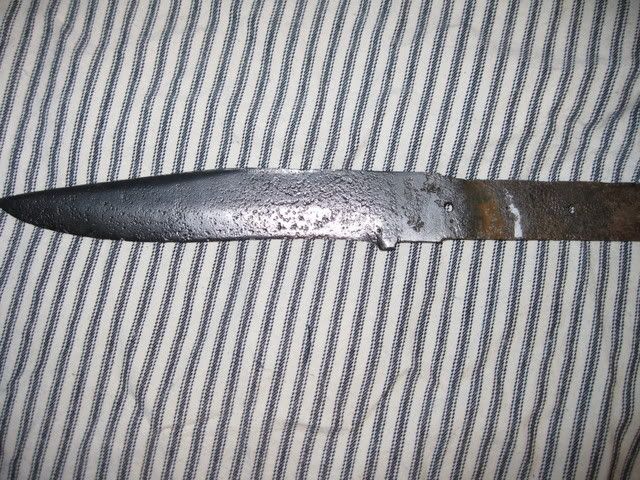...I am going to need some advice.
You all saw the photo of the 63 Sharps rifle I came up with. I have had it on the GB and it did not sell the first time and only has three folks watching it the second time through. I am going to let it run two more times and if it does not sell, I'll keep it.
My thought would be to restore it to shooting condition which means some parts replacement as well as some work on the external surfaces of the metal.
I am hoping to get down below the surface corrosion and hopefully be able to pick out a serial number or some marks.
My strategy would be to start with sand paper. Probably 150 or so.
I have no experience working with a rifle that is as bad as this one.
I have two hundred bucks in it and I would like for the final product to be worth at least two hundred bucks plus whatever I spend on parts.
Which brings me to my next question. I know about Numrich, DGW and VTI. But is there a good source of Sharps parts other than the biggies?
Also, In terms of the lock parts or receiver parts, will the stuff that is made for the replica's work in this original rifle?
You all saw the photo of the 63 Sharps rifle I came up with. I have had it on the GB and it did not sell the first time and only has three folks watching it the second time through. I am going to let it run two more times and if it does not sell, I'll keep it.
My thought would be to restore it to shooting condition which means some parts replacement as well as some work on the external surfaces of the metal.
I am hoping to get down below the surface corrosion and hopefully be able to pick out a serial number or some marks.
My strategy would be to start with sand paper. Probably 150 or so.
I have no experience working with a rifle that is as bad as this one.
I have two hundred bucks in it and I would like for the final product to be worth at least two hundred bucks plus whatever I spend on parts.
Which brings me to my next question. I know about Numrich, DGW and VTI. But is there a good source of Sharps parts other than the biggies?
Also, In terms of the lock parts or receiver parts, will the stuff that is made for the replica's work in this original rifle?


